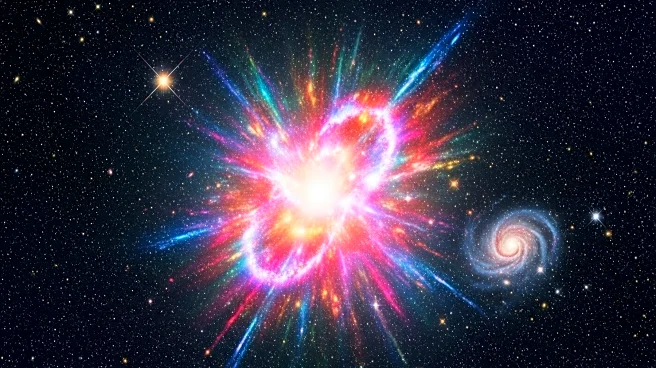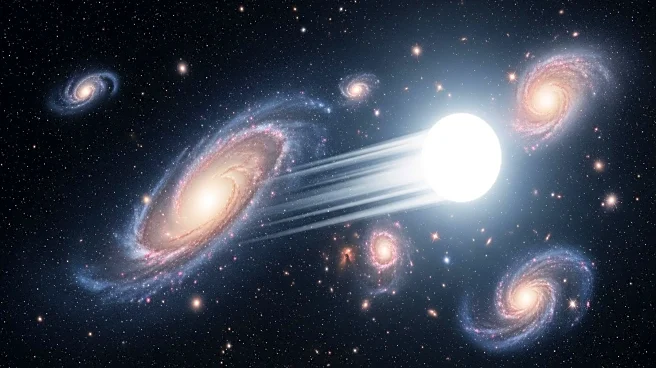What's Happening?
A supernova, designated SN2025rbs, has been detected near the core of the spiral galaxy NGC 7331. The event, which occurred roughly 40 million years ago, was identified on July 14 by the Gravitational-wave Optical Transient Observer project. The supernova resulted from a thermonuclear explosion of a white dwarf star. Rodney Pommier, an astroimager from Portland, Oregon, captured images of the supernova with a telescope, showing its position as a dot near the galaxy's core.
Why It's Important?
The detection of supernova SN2025rbs provides astronomers with a unique opportunity to study the life cycle of stars and the dynamics of galaxies. Supernovae are critical for understanding stellar evolution, as they contribute to the distribution of elements throughout the universe. This event also highlights the capabilities of modern astronomical projects and collaborations in identifying and analyzing cosmic phenomena, which can lead to advancements in astrophysics and cosmology.
What's Next?
Further observations and analyses of SN2025rbs will likely focus on understanding the characteristics of the explosion and its impact on the surrounding galaxy. Researchers may use data from various telescopes to model the supernova's behavior and its role in the galactic environment. These studies could enhance our knowledge of supernova mechanisms and their contributions to cosmic evolution.














